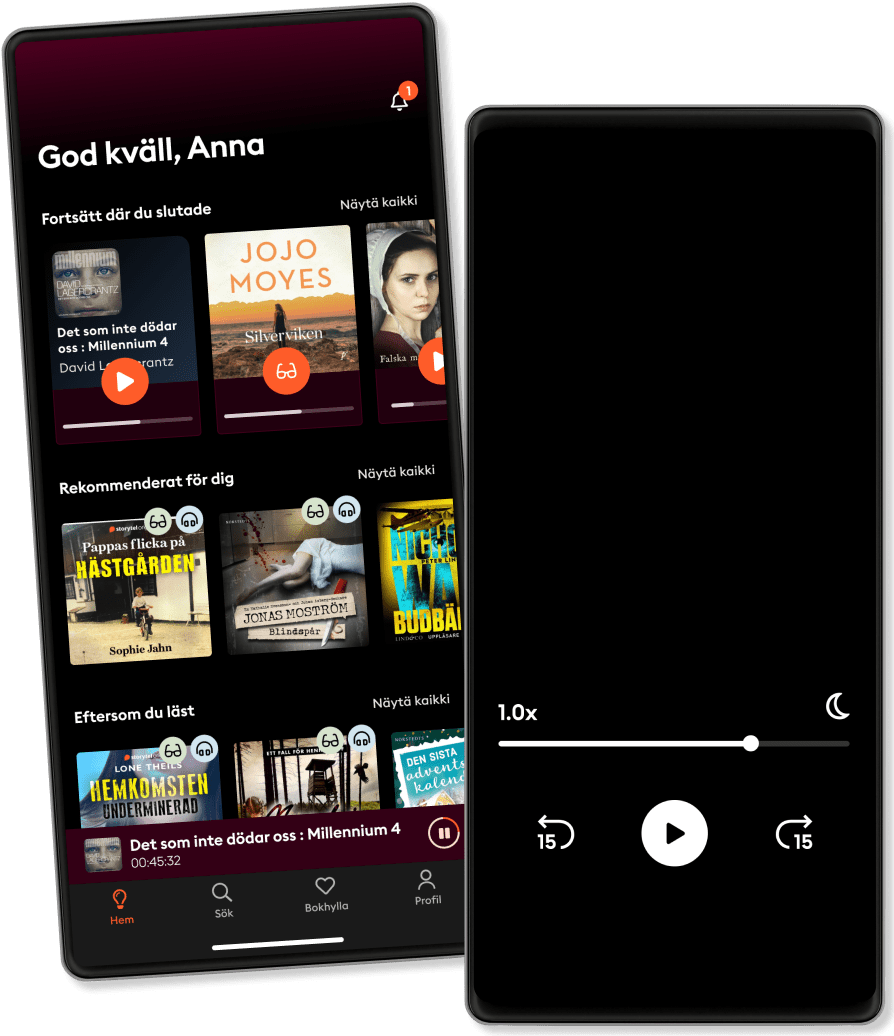Listen and read
Step into an infinite world of stories
- Listen and read as much as you want
- Over 400 000+ titles
- Bestsellers in 10+ Indian languages
- Exclusive titles + Storytel Originals
- Easy to cancel anytime

Classics Fairy Tales
- By
- With:
- Publisher
- Duration
- 8H 10min
- Language
- English
- Format
- Category
Children
Classic fairy tales are timeless stories that have captivated generations with their magical worlds, enduring lessons, and universal themes. Rooted in oral traditions and later immortalized by authors like the Brothers Grimm, Hans Christian Andersen, and Charles Perrault, these tales blend fantasy, morality, and cultural heritage to create narratives that resonate across ages and cultures.
Core Characteristics
1. Timeless Themes
Classic fairy tales often explore universal values such as courage (e.g., Jack and the Beanstalk), kindness (Cinderella), and resilience (The Ugly Duckling). They use symbolic elements like enchanted objects (magic mirrors, golden birds) and archetypal characters (heroes, villains, and helpers) to convey moral lessons.
2. Cultural Diversity
From European staples like Snow White and Little Red Riding Hood to global adaptations (e.g., Chinese tales like The Seven Brothers or Middle Eastern stories like Aladdin), classic fairy tales reflect the myths and values of their origins. Modern anthologies, such as DK’s A First Book of Fairy Tales, curate cross-cultural stories to showcase this diversity.
3. Artistic Legacy
Many classic tales are celebrated for their iconic illustrations. For example, Hans Christian Andersen’s The Little Mermaid features artwork by Kay Nielsen and Arthur Rackham, blending storytelling with visual artistry. Similarly, interactive formats like animated videos (Fairy Tales BUNDLE) and AR-enhanced apps modernize these stories while preserving their essence.
4. Educational Value
Fairy tales are pedagogical tools that foster empathy, critical thinking, and creativity. Stories like The Emperor’s New Clothes teach honesty through satire, while resources like Fairy Tales True/False Cards and sequencing activities help children engage with narrative structures.
© 2025 Fairy Tale Collection (Audiobook): 9798347929900
Release date
Audiobook: 9 April 2025
Tags
Others also enjoyed ...
- The Woman Who Lived In A Shoe L. Frank Baum
- Calming Animal Stories for Young Children and Puppies: 12 Calming Stories to Help Settle Young Children and Anxious Puppies Hans Christian Andersen
- Bedtime Stories for Kids: Goodnight Tales for Sweet Dreams and Deep Sleep - Special Collection of Children's Little Known Beloved Fairy Tales | Ages 5 to 13 or Older! Louisa May Alcott
- The Capture of Father Time L. Frank Baum
- Dracula's Secret Bram Stoker
- The Jungle Book: The Classic Edition Rudyard Kipling
- Bedtime Stories for Easter: 14 Relaxing Short Bedtime Stories to Entertain Young Children Over the Easter Holidays Hans Christian Andersen
- The Fir Tree Hans Christian Anderson
- Calming 5 Minute Short Stories for Young Children: 20 Relaxing 5 Minute Short Stories to Help Calm Young Children Hans Christian Andersen
- The tale of Peter Rabbit Beatrix Potter
- Chhava Prakaran 1 Shivaji Sawant
4.3
- Mrutyunjay Bhag 1 - Karn Shivaji Sawant
4.3
- Mrutyunjay Bhag 2 - Kunti Shivaji Sawant
4.5
- Tharrat Suhas Shirvalkar
4.3
- Ruthinte Lokam Lajo Jose
3.8
- Mrutyunjay Bhag 3 - Karn Shivaji Sawant
4.5
- Star Hunters Suhas Shirvalkar
4.7
- Ravan Raja Rakshsancha Sharad Tandale
4.6
- Self Meditation -दिवसाची सुरुवात करताना Gauri Janvekar
4.3
- Raton Ka Raja Suhas Shirvalkar
4.3
- Tan Andhare Dr. Chaya Mahajan
4.4
- Pratipaschandra Dr. Prakash Koyade
4.5
- Bangarwadi Vyankatesh Madgulkar
4.4
- Gunahon ka Devta Dharmveer Bharti
4.6
- Raghoji ani Loot Suratechi Sanjay Sonawani
4.4
English
India